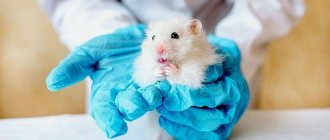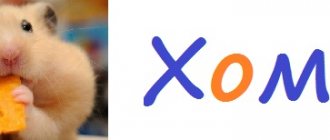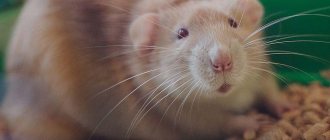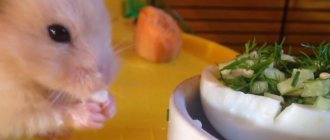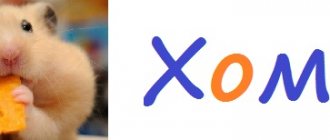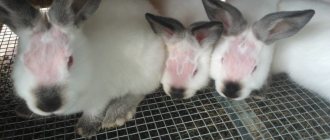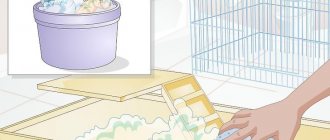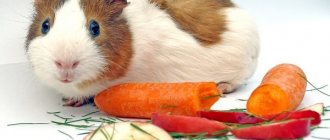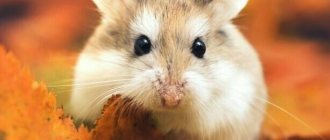Stressful situations
Very often, hair loss occurs as a result of some negative event or stress. Like all other rodents, chinchillas are highly sensitive to the following factors:
- change;
- moving;
- the emergence of new people;
- new items in the cage;
- the appearance or death of another domestic animal;
- lack of communication with the owner.
When a stressful situation occurs, the fur begins to come out in large quantities in clumps, which is the reason for the appearance of bare areas on the animal’s body. The problem can be solved quite simply:
- providing the chinchilla with a calm environment;
- attention from the owner;
- gentle and calm treatment;
- introducing the animal’s favorite treats into the diet.
Such measures can be considered sufficient to ensure that hair loss stops after a few days.
Lichen
Microscopic fungi brought from outside by animals or people are the cause of lichen. Round or oval bald patches of skin appear that quickly increase in size. They are located on the nose, around the eyes, on the paws and near the tail.
If action is not taken quickly, the rodent's entire body will become a complete bald spot, covered with a flaky crust. This is dangerous not only for sick animals, but also for all inhabitants of the house. If the animal begins to itch and bite its fur, there is a reason for a careful examination. If lichen is detected, be sure to visit a veterinarian with all animals, including cats and dogs.
ATTENTION! If an infection is detected, the first thing to do is isolate the rodent and disinfect the cage. Add mycodermatitis to the bathing sand.
If a visit to the veterinarian is not possible, the lesions should be treated with one of the drugs: lamisil, exoderil, chlorhexidine, medical sulfur. If extensive damage is observed, 1/14 tablets of Nizoral are administered daily for a month. If you have the Vakderm F vaccine, give injections of 0.3-0.5 ml for 10 days. After missing 10 days, the course is repeated. You need to do 30 injections. Possible increased hair loss.
IT IS IMPORTANT! Before purchasing chinchillas, be sure to study the list of necessary medications and first aid kit equipment.
Skin diseases (dermatitis)
Here is another reason why hair loss begins. The problem may lie in skin diseases, which are often accompanied by severe itching, inflammation and hair loss. If a chinchilla has a good immune system, then the manifestation of dermatitis is quite rare. This disease can be of both an allergic nature and a fungal one.
Chinchilla dermatitis
Vitamin complexes and mineral supplements
Hair loss causes and treatment - all this interests people who are faced with baldness. As already mentioned, hair loss in women, like men, can be stopped using an integrated approach. The treatment uses both medications against hair loss and vitamin complexes.
One of these vitamin preparations with effective action is Tricologic, which contains Keraton TM. This complex includes:
- amino acids that activate keratin production;
- para-aminobenzoic acid;
- extracts of valuable plants;
- vitamins E, C;
- pantothenic acid;
- iron;
- beta-carotene;
- selenium;
- vitamin elements of the B group.
The vitamin complex is taken orally and delivers valuable substances to nourish hair through the blood, directly to the follicles. Thanks to the presence of vitamins E, C, beta-carotene, free radicals are blocked, aging and hair loss are slowed down.
The complex is also useful thanks to:
- Vitamin A helps normalize sebum production and restore skin health;
- vitamin E actively restores the functionality of processes occurring in tissues;
- Vitamin C helps in the formation of connective tissue;
- vitamin B elements are necessary for proper division and growth of cells, including those located in the follicle matrix;
- biotin normalizes metabolism and gland secretion;
- para-aminobenzoic acid is necessary to maintain natural hair pigmentation;
- pantothenic acid is needed to maintain healthy hair;
- silicon helps maintain hair elasticity;
- minerals such as zinc, iron, chromium, copper, etc., support the health of hair shafts and follicles, nourish cells, and improve metabolism.
Treatment of hair loss can be carried out using other vitamin complexes, for example Tallium-plus, Revalid, Aurita, Perfectil
It is important that the body, during active hair loss, receives a sufficient amount of nutrients and minerals necessary to improve health and improve the functionality of all processes occurring in the tissues.
Allergy
If the body is hypersensitive to various irritants, the following symptoms can be observed in an animal:
- conjunctivitis;
- inflammation of the eyelids;
- lacrimation;
- sneezing;
- dyspnea.
An allergic reaction accompanies the following situations:
- switching from one type of feed to another, this applies to both ready-made mixtures and those prepared by the owner (dusty hay);
- bedding materials;
- hygienic sand for bathing chinchillas;
- an allergic reaction to toxic substances released by internal parasites.
Conjunctivitis in chinchillas
Minoxidil
Minoxidil is a hair drug that is a vasodilator that effectively stops hair loss and increases the growth rate of new hair shafts. Minoxidil, for example, is the main component of the drug "Rogaine" or "Regaine", which is actively used to get rid of androgenetic alopecia and treat hair growth. Among the drugs that also include Minoxidil are eucapil, procopil, and alerana. It is used as an additive by many cosmetic lines that produce shampoos to strengthen hair.
Minoxidil directly affects hair follicles, activates cell nutrition by dilating blood vessels and improving blood flow. For ease of use, Rogaine is available in the form of a spray and hair foam.
Minoxidil is actively used to treat hair loss in women. Correctly, a drug with a 2% concentration is used. In turn, “Regaine” for men has a 5% percentage solution concentration. The product is especially effective in the initial stages of hair loss with aggressive processes, and gives less pronounced results with a large area of baldness.
Fungus
Fungal infections cause diseases such as trichophytosis and microscopy, otherwise these ailments are called lichen. The diseases have similar symptoms: it all starts with the appearance of regularly defined oval or round scaly or blistered areas on the chinchilla’s skin. Then hair loss begins, and if you miss the moment and do not carry out treatment, then in a very short time the animal will become completely bald.
If the veterinarian confirms the presence of lichen, the owner should remember that the disease is very contagious and can be transmitted to humans. Animals are treated with injections, tablets, sprays, ointments - it all depends on the degree of damage.
What to do if your British cat sheds a lot
In order to shorten the shedding period of a British cat, veterinary experts recommend using the following methods:
- Switch your pet to high-quality food and ensure your pet receives the necessary vitamins and microelements.
- In the autumn, reduce daylight hours for your pet - there is no need to leave your British cat in a lighted room in the evenings.
- Do not let the animal sleep on radiators or in other warm places. Be sure to ventilate the room at night.
- The air in the room where the cat is kept should not be dry.
In any case, such measures will help the molt proceed without complications and provide the animal with the greatest comfort.
Grooming
Regular brushing of fur during shedding is necessary not only to reduce soiling of carpets and sofas. This process is extremely important for the health of the British:
- during combing, the skin in the growth zone of the root bulbs is massaged;
- metabolism improves;
- the undercoat layer is ventilated.
If a cat is accustomed to brushing and does not panic at the sight of a brush, it enjoys it and its health improves.
Antiparasitic treatments
A mandatory procedure for British breed cats is annual vaccination and treatment against parasites (external and internal). These measures do not directly affect the molting process, but they improve health, prevent the development of a number of diseases and are always considered in conjunction with other preventive measures.
If a small British kitten sheds heavily, then first of all you need to ask whether its mother has been treated for worms, fleas and lice. Most often, at an early age, they become the cause of active shedding of fur.
Changing the indoor microclimate
The living conditions of a British cat affect how the pet sheds. In this sense, everything must be done to ensure that the animal experiences at least minimal changes in temperature and humidity, since the body is guided by the length of daylight hours and the accompanying climatic conditions.
The cat owner must:
- regularly ventilate the room;
- provide walks on the street or at least equip a place for the cat on the balcony;
- maintain an appropriate level of humidity in the house/apartment - dry air completely changes the structure of the hair and the molting cycle.
It is necessary to provide the animal with the opportunity to climb to high places and settle down there. Even within the same room, but at different levels, temperature and humidity change, and the cat itself finds the most comfortable place.
Reducing stress levels
The most common cause of stress for a British cat is noisy company in the house and lack of privacy. The breed prefers solitude rather than constant communication. Failure to comply with this condition leads to increased emotional stress, which can result in aggression or lead to the onset of prolonged molting. Once the source of the irritation is eliminated, your Briton will be at peace and will return to his normal coat changing routine.
Misfeeding
A lack of vitamins in an animal’s body, or vitamin deficiency, occurs very often due to the fact that the feeding diet is incorrectly formulated and consists of monotonous food. Most often, chinchillas encounter vitamin deficiency in the spring or autumn, because there is a reduction in succulent green food, due to the fact that it is very difficult to get it.
The lack of vitamins is accompanied by deterioration of the coat, which is manifested by its loss in whole tufts. Vitamin deficiency is often mistaken for dermatitis or the presence of ectoparasites due to the similarity of symptoms (redness of the skin, peeling).
Incorrectly composed diet
Overcoming vitamin deficiency is quite simple:
- introduction of vitamins or injections into the diet, which include veterinary drugs containing essential microelements;
- Along with food, they give fresh fruits, vegetables, and herbs.
Vitamins are given for 14 days, dosage occurs individually for each animal.
Vitamins in excess lead to hypervitaminosis, one of the signs of this disease is also loss of fur, and in addition to this symptom, problems develop:
- with cardiovascular activity;
- breathing;
- digestion.
Avitaminosis
Shedding, which begins in early spring or with the onset of winter, can also be caused by vitamin deficiency. It is during this period that a lack of vitamins usually appears, caused by a reduction in succulent food in the animal’s diet. With vitamin deficiency, the hair may fall out in clumps, leaving noticeable bald patches. Sometimes the skin in bald areas turns red and starts to itch. What to do if the animal has vitamin deficiency? Add vitamins to your diet, as well as more fruits and fresh vegetables, if possible.
The most common vitamins for chinchillas are Ascorutin, Supradin Kinder Gel for children or Multitabs.
It is recommended to give one drop once a day for 12-14 days. When adding vitamins, you should remember to be careful and not exceed the recommended duration. An excess of vitamins can cause hypervitaminosis, which is also accompanied by unpleasant symptoms - baldness, problems with digestion and breathing.
Content problems
Often, a chinchilla’s fur begins to fall out even if the owner does not take into account how the animal lives in its natural habitat. During the heat, the chinchilla finds voids in the rocks, which are located in the north, where there is no direct sunlight. Animals get used to coolness, and therefore they are not suitable for rooms where the temperature is set high. The ideal regime for a chinchilla is no more than +20°C.
With the onset of winter, you should not move the cages closer to heating devices; in the summer, animals should be protected from direct sun. With the onset of heat, it is recommended to connect air conditioners.
How does the molting process work?
Chinchillas can shed at intervals of several weeks. The process of shedding their fur starts from their head and moves towards the tail. New fur begins to grow and pushes out the old one.
During this process, you can notice a clear line on the fur. This line, known as the primer line, is the area where the fur coat is currently being renewed. The line will gradually move down the entire body until the coat is completely renewed. The animal wears a new coat for several weeks before it is time to begin the molting process again.
The process occurs all year round, however it can be noted that animals shed more fur in the summer or spring to keep cool than in the winter months.
Chinchilla chews fur
Some owners begin to notice how their pet chews out its fur. This is most commonly seen in the limb, flank or tail area. This behavior should not be attributed to a natural change of coat and should not be thought of as molting.
Gnawing fur
Gnawing its fur may be a reaction to the stress it has been exposed to, but most often this behavior signals that the chinchilla is bored. To correct the situation, the following methods are recommended:
- transplant the animal into a freer enclosure;
- buy toys;
- spend more time with your pet.
Stress
A sensitive animal may be frightened by:
- Incorrect handling (lifting by the tail, rough catching);
- Loud screams, unexpected roar, knocking and unusual sound.
- The annoying company of children and the curiosity of cats or dogs.
- Change of cage.
- Finding neighbors.
- Injuries during a fight from blows against the bars of the cage.
Under natural conditions, shedding fur helps the rodent escape the teeth and claws of its enemies. In a home environment, if handled carelessly, tufts of wool remain in the hands of the owner. Another evidence of stress is excessive shedding or gnawing of fur from the sides.
Having noticed signs of fear, it is necessary to find out its causes, change the way of communication and create acceptable conditions for the existence of the animal. The fur will grow back in 2-3 weeks.
To adapt a newly acquired pet you should:
- Do not pick him up for 2-3 days, wait until the chinchilla calms down and begins to get acquainted with the home.
- Start communication in the morning, without sudden movements, placing your hand under your tummy.
- Give the second one a sniff so that the animal remembers the smell of its owner.
- For the first week, do not try to pet the chinchilla.
ATTENTION! Trust and affection are achieved through patience and affection.
There are several signs of vitamin deficiency
What to feed a chinchilla
For adequate nutrition of the animal, the owner will have to provide the following food:
- rough (branches, hay, bark);
- fresh herbs (in season);
- vegetables and fruits;
- compound feed.
When preparing your diet, you should consider some nuances:
- the animal's need for nutrients;
- age characteristics and gender;
- health;
- physiological state;
- season.
One adult chinchilla can eat 50-65 grams of food per day, if we talk about the amount of food per day, then the approximate diet is as follows.
| Name of feed | Quantity in grams |
| Compound feed | 20-25 |
| Hay and branches | 20-25 |
| Vegetables, green mass | 5 |
| Treats* | 3-4 |
*the animals have a very positive attitude towards various delicacies. As a treat, they choose various fruits and berries, as well as feed additives purchased in specialized stores. Most of all, chinchillas love:
- fresh apple, melon, pear;
- raisins, dried apricots, prunes;
- rosehip and hawthorn berries.
Treats for chinchillas
To diversify the diet, it is recommended to alternate fruit and berry treats. When training, it is best to choose treats that can be purchased at a pet store. But all good things should be in moderation; overfeeding with goodies leads to serious health problems for a chinchilla.
Causes of unnatural shedding
Living in its natural habitat and taking into account the geographical location of its natural range, the chinchilla has not acquired genetic diseases and is very tolerant of changes in its diet.
A change in the main part of the coat occurs when the baby grows up and this is the only natural molting of a rodent. Unlike other animals, the chinchilla does not shed depending on the changing seasons and the process of molting in an adult is gradual. Caring for and maintaining an animal at home is not difficult.
Therefore, abnormal molting is a source of concern for the pet’s health. Common causes include skin diseases and nervous overload of the pet.
Stress
A common cause of hair loss is stress. A sudden change in the environment causes damage to the animal’s fragile nervous system, which affects the change in the structure of the coat. The transferred fear will lead to abundant tufts of hair coming out with the rapid appearance of bald patches.
The causes of stress include:
- Change of owner.
- Replacing the cage with a new house.
- Loud sounds, unexpected claps and calls. Severe fear from noise during repair work.
- Reaction to other pets.
- Sudden photo flash.
- Quick hand movements.
Friendly intonations in the owner's voice, affectionate treatment and favorite delicacies can calm the animal down.
A friendly environment will lead to the end of unnatural molting after some time.
Avitaminosis
When the season changes, hair coming out provokes a lack of vitamins in the rodent’s body. A monotonous diet and a lack of fresh vegetables and fruits in the diet lead to the onset of the disease.
Growing puppies, pregnant and aging animals are especially susceptible to the disease. A severe form of vitamin deficiency is accompanied by redness of bald areas of the skin, itching and subsequent peeling.
To fix the problem it is recommended:
- Enrich the composition of the finished feed by adding cereals containing vitamins A and D.
- Add dried hay and grass regularly.
- Purchase mineral supplements in the form of salt rock.
- Add fresh fruits and vegetables that contain a lot of moisture to your food.
- In case of severe skin damage, add the Multitabs vitamin complex to the drink at the rate of 1 drop per 100 grams of water. It is not advisable to administer vitamins intramuscularly due to the painfulness of the procedure and the aggravation of stress.
Important! During treatment, it is necessary to observe the behavior and condition of the animal. An excessive dose of vitamins causes hypervitaminosis, which extremely complicates the well-being of the rodent
Dermatitis
It cannot be said that dermatitis occupies a leading place among skin diseases in chinchillas.
Thanks to their excellent natural characteristics and strong immunity, rodents rarely suffer from dermatitis
However, insufficient attention of the owner to the condition of the pet's fur can lead to scratching, frequent biting and baldness of the skin.
To treat an animal, you must visit a veterinarian to prescribe medications.
Sand baths will help prevent the occurrence of dermatitis. In nature, to protect themselves from parasites, chinchillas bathe in volcanic sand. The finely ground substance absorbs excess moisture well, protects against colds and supports the overall well-being of your pet.
Incorrect content
The problem of hair loss is faced by owners who do not take into account the factors of chinchillas living in natural conditions. In the wild, the animals find stone cavities in the rocks located on the north side and use them as shelter. Therefore, animals accustomed to coolness find it difficult to stay in a room with elevated temperatures.
To avoid unnatural molting, the room with the cage must maintain an air temperature of no higher than +20 degrees.
In winter, install the enclosure in a far corner away from radiators, and in summer avoid direct sunlight. In hot weather, it is recommended to use air conditioning.
We recommend that you read:
Gnawing fur
A common occurrence in chinchillas is hair chewing. Upon external examination of the pet, the fur resembles an exotic haircut, with the sides, paws and tail most often affected.
Since the animal trims its own pieces of fur on its own, this does not apply to shedding.
Why does a chinchilla lose its fur in clumps, as if shedding? Sometimes such actions can be a reaction to a stressful situation after an injury or surgery. But often, a chinchilla with this behavior lets its owner know that it is bored.
In this case it will help:
Moving to a larger cage. Providing additional toys. Additional attention from the owner to the pet.
Hair transplantation
In the second stage of the procedure, donor follicles are implanted into bald areas. For replanting, a special micro-instrument choi implanter is used with a needle thickness of 0.5-0.9 mm, selected so that the diameter of the instrument matches the size of the transplanted material.
Before implantation, the length of the follicle is measured using a microscope. Based on the data, the length of the implanter needle is adjusted, after which the follicles are implanted into the skin. Thanks to a special tool during transplantation, you can control the direction and angle of hair growth. These parameters are individual for patients and must be observed during transplantation. Where there is hair on the skin, grafts are placed parallel to their growth; if there is no hair, the natural direction is restored.
In addition, it is important to ensure that the hair has a natural thickness. Therefore, when transplanting, grafts with different numbers of hair follicles are used.
For example, one bulb is implanted along the edge of hair growth. Next, material with two or three follicles is implanted.
After transplantation, the transplantation area is treated with a special solution, which activates engraftment and hair growth.
Soft bag
Fabric carriers have been around for a long time, but their modern development has primarily affected the increase in the number of all kinds of windows, mesh and other little things. The cat will no longer sit in a dark bag, not much different from an ordinary travel bag. It is difficult to organize a comfortable long trip in such a device. But for short distances the convenience is quite adequate.
The advantage of a soft cage is its lightness, compactness, and the ability to securely attach it to a car seat or, for example, to the handle of a suitcase.
Negatives: Not hygienic for long trips and difficult to clean quickly (although they can withstand washing in a regular washing machine).
Cost – 1,360 – 1,489 rubles.
What medications are recommended?
Special vitamins can be bought at the pharmacy. They are divided into the following groups:
- Fat-soluble liquids. They are administered to animals one drop at a time from a dropper or disposable syringe.
- Soluble in water: “Vita Sol” (), “Vitamin Plus N”. () and others. They are added to drinking water. Since their structure quickly deteriorates when exposed to sunlight, it is best to add them to water in the evening.
- Powder: Vitamix and Vitapol. They are mixed with bran, dry food, dried and crushed grass;
- tablets “Ascorbic acid” and “Ascorutin”;
- Vitamins for children: Biovital Kinder gel and Multitab baby. Chinchillas love the sweet taste of these vitamins.
The course of fortification lasts 30 days, followed by a break and repetition if necessary.
